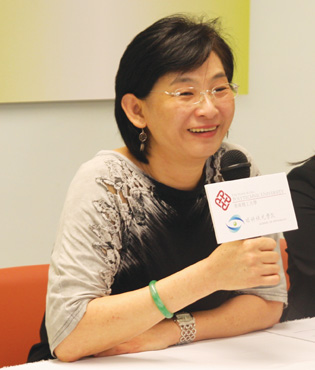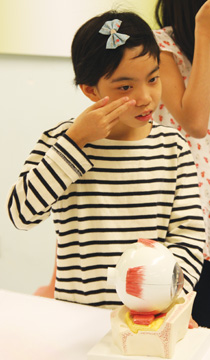 |
A PolyU study on the efficacy of orthokeratology has confirmed its effectiveness in controlling childhood myopia. |
| Prof. Pauline Cho |
Does your child complain about problems in seeing the blackboard in class or narrow his/her eyes to see better? Childhood myopia has reached epidemic proportions, especially among Asians, and myopic degrees can increase drastically as they grow up. A non-surgical treatment to correct vision, "Orthokeratology" or simply "Ortho-K" treatment, is considered the eye-dream for worried parents of myopic children.
In Ortho-K treatment, myopic children wear specially designed rigid gas-permeable contact lenses at night. Their vision can be improved in the daytime without the need for spectacles or contact lenses, thus bringing convenience to daily life. However, parental support and monitoring, as well as cooperation with eye-care practitioners are essential to safe Ortho-K lens wear and achieving the best outcome.
Led by Prof. Pauline Cho, a research team at the School of Optometry has conducted research studies on the effectiveness of Ortho-K in controlling myopic progression in children. The results of one study of 78 children aged 7 to 10 years old with 0.50D to 4.00D myopia showed that myopic progression of those received Ortho-K were 43% slower, compared to the other group of children wearing spectacles.
A two-year study on children aged 8 to 11 years, with myopia more than 5.00D concluded that those receiving Ortho-K treatment (reduction up to 4.00D) with over-spectacles showed smaller increase in refraction (myopia) compared to those using spectacles (0.13D versus 1.00D respectively). The study showed that the children in the Ortho-K group had slower eyeball elongation (by 63%) compared to those who wear spectacles only, meaning that the Ortho-K treatment can significantly retard myopia progression in children with high myopia.
Another two-year study on 6 to 12 year-old children with myopia and moderate to high astigmatism showed that children in the Ortho-K group had significantly smaller increases in eyeball elongation than those wearing spectacles. The rate of eyeball elongation in these children was about 52% slower compared to children wearing spectacles. The results of these three studies showed that Ortho-K treatment is an effective way of slowing down myopic progression in children. ♦

